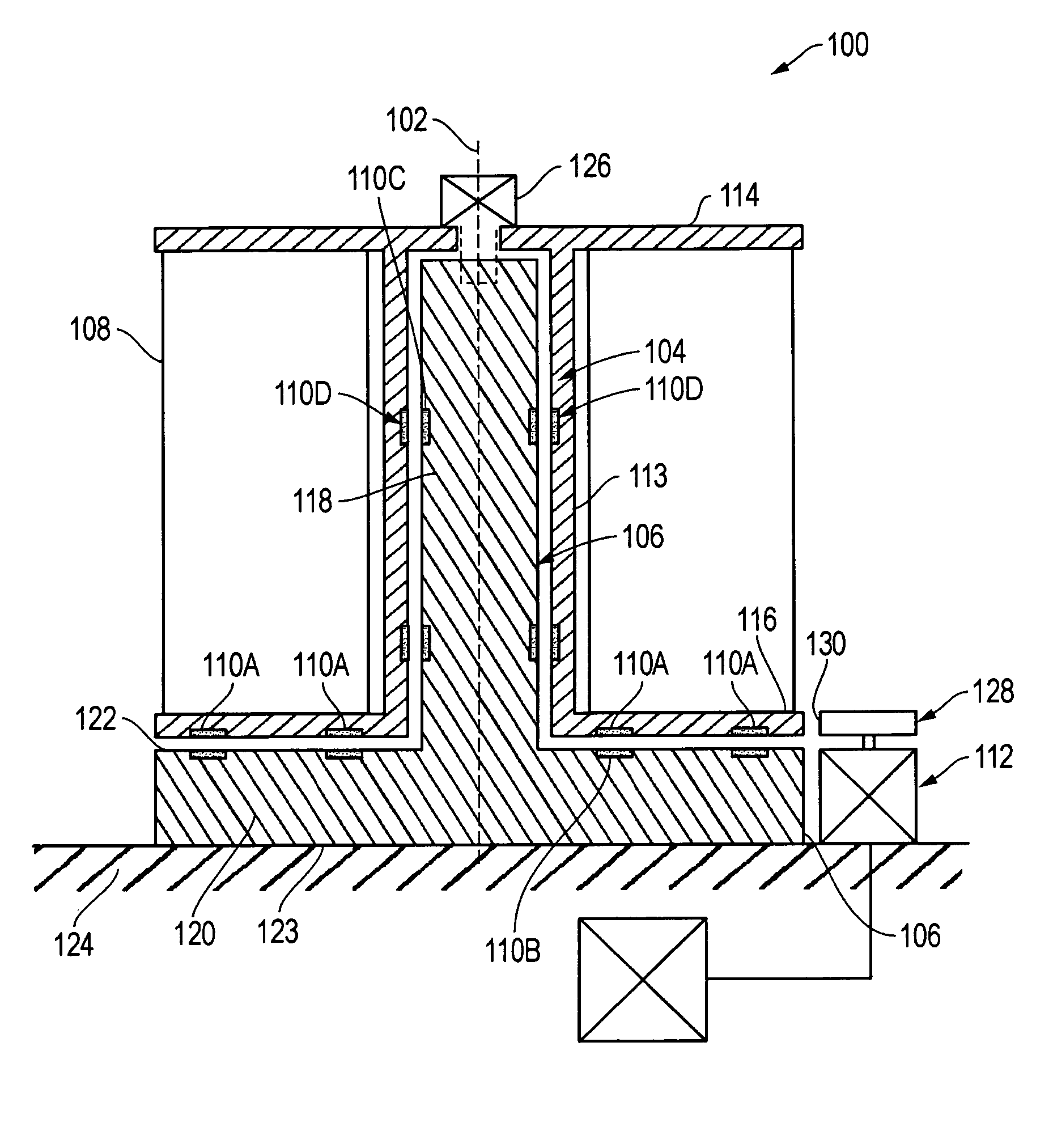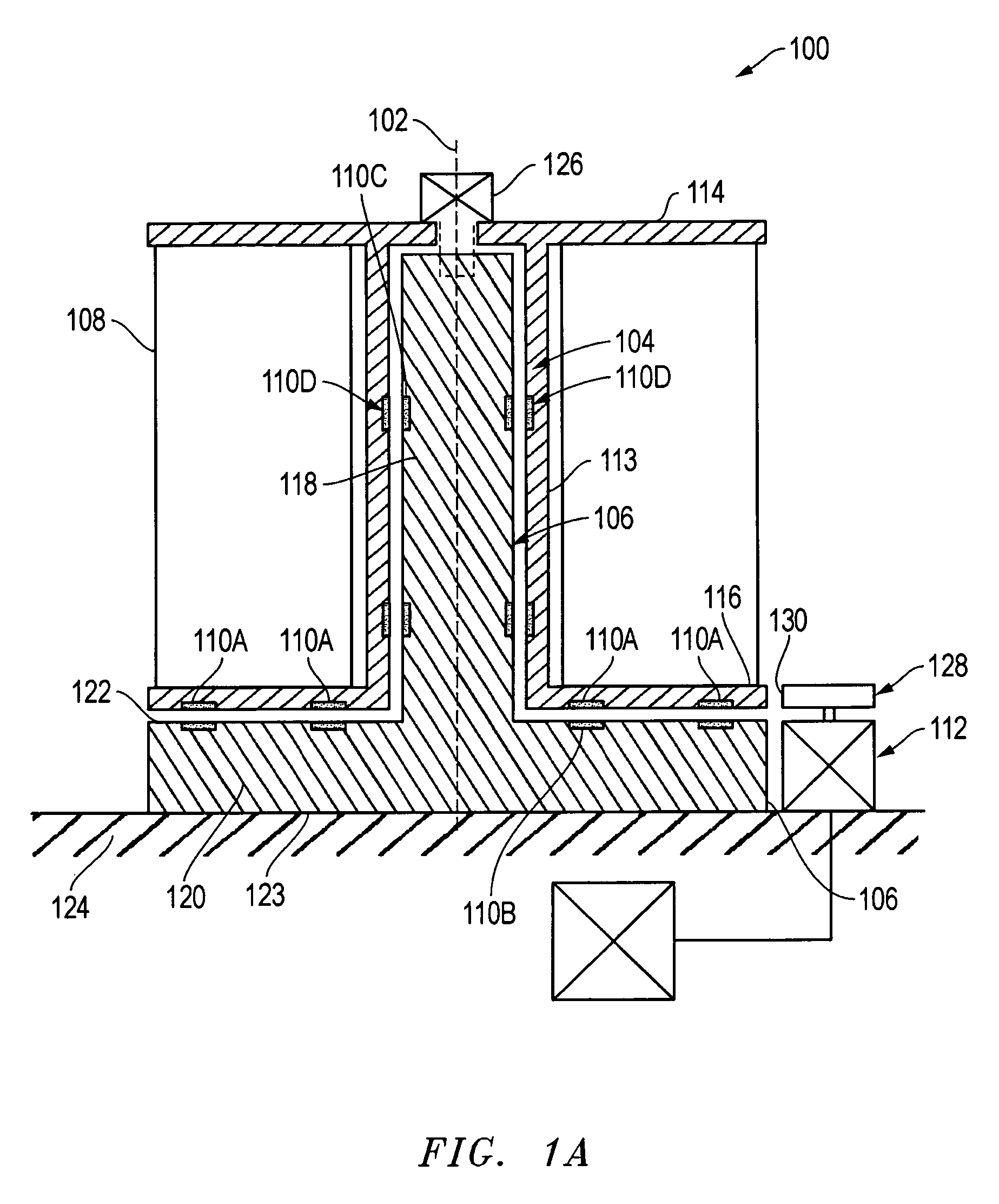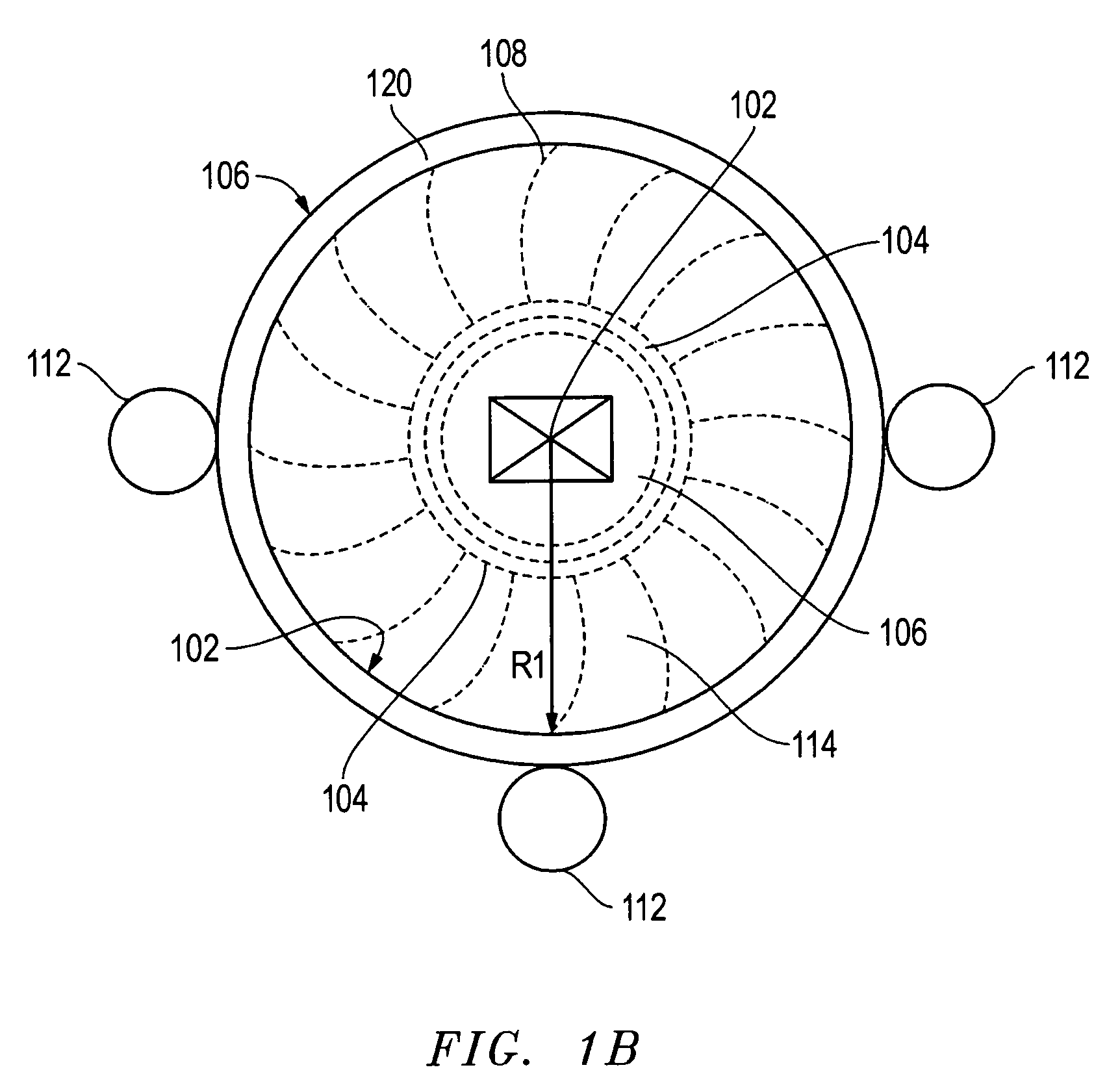Wind turbine
a wind turbine and turbine blade technology, applied in the direction of wind turbines with perpendicular air flow, wind turbines with parallel air flow, etc., can solve the problems of energy loss during the process, frequent and costly repairs, etc., to reduce friction force, increase electrical power, and increase efficiency
- Summary
- Abstract
- Description
- Claims
- Application Information
AI Technical Summary
Benefits of technology
Problems solved by technology
Method used
Image
Examples
Embodiment Construction
[0021]FIG. 1A is a schematic cross sectional view of a wind turbine 100, according to one embodiment. The wind turbine 100, as shown, is a vertical axis wind turbine. Therefore, a core axis 102 of the wind turbine 100 is substantially in a vertical plane relative to the Earth. The wind turbine 100 may have a turbine rotor 104 and a turbine support 106 within and concentric to the turbine rotor 104. The turbine rotor 104 rotates around the core axis 102 of the turbine support 106 in response to wind engaging one or more blades 108, shown schematically. The kinetic energy from the wind is captured by the blades 108 thereby rotating the turbine rotor 104. The turbine core support 106 may remain stationary as the turbine rotor 104 rotates around the axis 102. In order to reduce the effects of friction between the rotating turbine rotor 104 and the turbine support 106, one or more sets of magnets 110 are used to reduce the weight force of the turbine rotor 104 acting on the turbine suppo...
PUM
 Login to View More
Login to View More Abstract
Description
Claims
Application Information
 Login to View More
Login to View More - R&D
- Intellectual Property
- Life Sciences
- Materials
- Tech Scout
- Unparalleled Data Quality
- Higher Quality Content
- 60% Fewer Hallucinations
Browse by: Latest US Patents, China's latest patents, Technical Efficacy Thesaurus, Application Domain, Technology Topic, Popular Technical Reports.
© 2025 PatSnap. All rights reserved.Legal|Privacy policy|Modern Slavery Act Transparency Statement|Sitemap|About US| Contact US: help@patsnap.com



